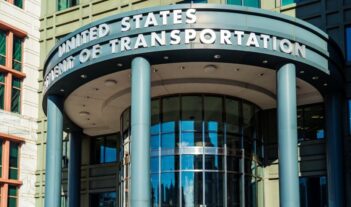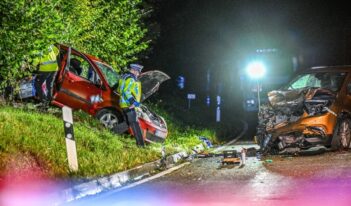
Scholar analyzes and suggests regulations for semi-autonomous vehicles.
A world with driverless cars is coming closer to being a reality.
Cars with features that allow a carefully monitoring driver to remove both hands from the steering wheel and foot from the pedal—known as partially driverless cars—are already on the road. And many vehicle manufacturers have released plans to add these features in at least some of their car models within the next 12 months. The National Highway Traffic Safety Administration (NHTSA) is also currently working to regulate fully driverless cars, which have not yet been released.
But according to Tracy Hresko Pearl, a Professor at Texas Tech University School of Law, NHTSA is doing little to address partially driverless cars that are already on the roads. In her recent paper, Pearl contends that NHTSA is making a “critical mistake” in choosing not to regulate partially driverless cars, a mistake which may be potentially very dangerous.
Pearl explains that partially driverless cars require drivers to pay close attention while the car basically drives itself. Keeping constant focus in a less than simulating situation is a hard task, says Pearl, and drivers understandably become distracted, daydream, and even fall asleep.
Pearl argues for greater regulation at both the federal and state level. At the federal level, Pearl explains, the U.S. Department of Transportation and NHTSA regulate vehicle design and equipment, as well as set safety standards for all new vehicles. States, by contrast, regulate drivers’ behavior and vehicle operation through traffic laws and the issuance of drivers’ licenses.
Under current federal law, manufacturers can place any form of automation into their vehicles without any assurance in advance if the systems are safe, observes Pearl. The manufacturers’ systems must comply with the Federal Motor Vehicle Safety Standards, but, as Pearl notes, regulators created these standards before partially driverless cars were created and are thus irrelevant. Pearl suggests introducing a mandatory pre-market approval process that would require manufacturers to submit a Safety Assessment report to NHTSA that would reveal how safe the automation is based on standard measurements.
Pearl also recommends that NHTSA require manufacturers to install attention-warning systems that can monitor a driver’s level of engagement. These systems should be both intuitive and standardized so that drivers do not have to learn new alerts and signals every time they drive a different car, Pearl adds. NHTSA already strongly suggests that manufacturers install these systems, which the agency does not do under current regulations.
Another federal regulation that Pearl recommends is for NHTSA to forbid vehicle manufacturers from naming their partially driverless cars in a way that misleads consumers about how independently the vehicle can operate without driver attention. Pearl mentions Tesla’s “Autopilot,” and Mercedes-Benz’s “Drive Pilot,” as examples of systems that “can give the false and dangerous impression that these cars are more capable than they really are,” and consequently “lure drivers into making choices that undermine the safety of these vehicles.”
Although these federal regulations would help make partially driverless cars safer, Pearl argues that states must get involved to create regulations that ensure drivers’ safety. First, Pearl recommends that states make it “illegal for drivers to tamper with or disable the attention warnings systems in their vehicles,” which drivers often do because they find the warnings frustrating or annoying. Specifically, Pearl contends that if drivers tamper with or disable the warnings intentionally, they should be subject to criminal charges if their tampering causes harm to others or property. This punishment, Pearl believes, would deter drivers from tampering with their systems.
Pearl also recommends that states require drivers of partially driverless vehicles to install software and firmware updates, which may include critical safety patches and other improvements within a reasonable time after the update becomes available. This would not be a significant burden on drivers, Pearl says, because a driver could update the vehicle through Wi-Fi signals or the car’s own network connections and would not need to make a trip to a service center or dealership. This type of regulation would be consistent with most states’ existing motor vehicle codes that already require annual inspection of vehicles registered in the state, states Pearl.
Pearl further suggests that states should consider passing laws that require drivers of partially driverless cars “to obtain pre-approved training on the capabilities and limitations of semi-autonomous vehicles.” Pearl says that this training would prevent situations where drivers might injure themselves by failing to brake because they believed that the vehicle would brake for them. This regulation would also be consistent with pre-existing state-level requirements, Pearl remarks, since states already impose different licensing and driving requirements for different types of vehicles.
Pearl notes that states would have to address several issues to create reasonable and effective training, since partially driverless vehicles vary in their capabilities. States would either have to create or approve consumer training for each manufacturer’s unique vehicle, says Pearl, or create a more general training to teach drivers about specific types of systems, which could include automatic cruise control, lane centering, and other features. Pearl observes that if states require this type of training, these partially driverless vehicles could not be lent or rented to “standard drivers”—a factor that could “slow the adoption of driverless cars in general.”
Pearl contends that even with these challenges, the federal government and states should adopt these regulations to improve the safety of driverless cars.



